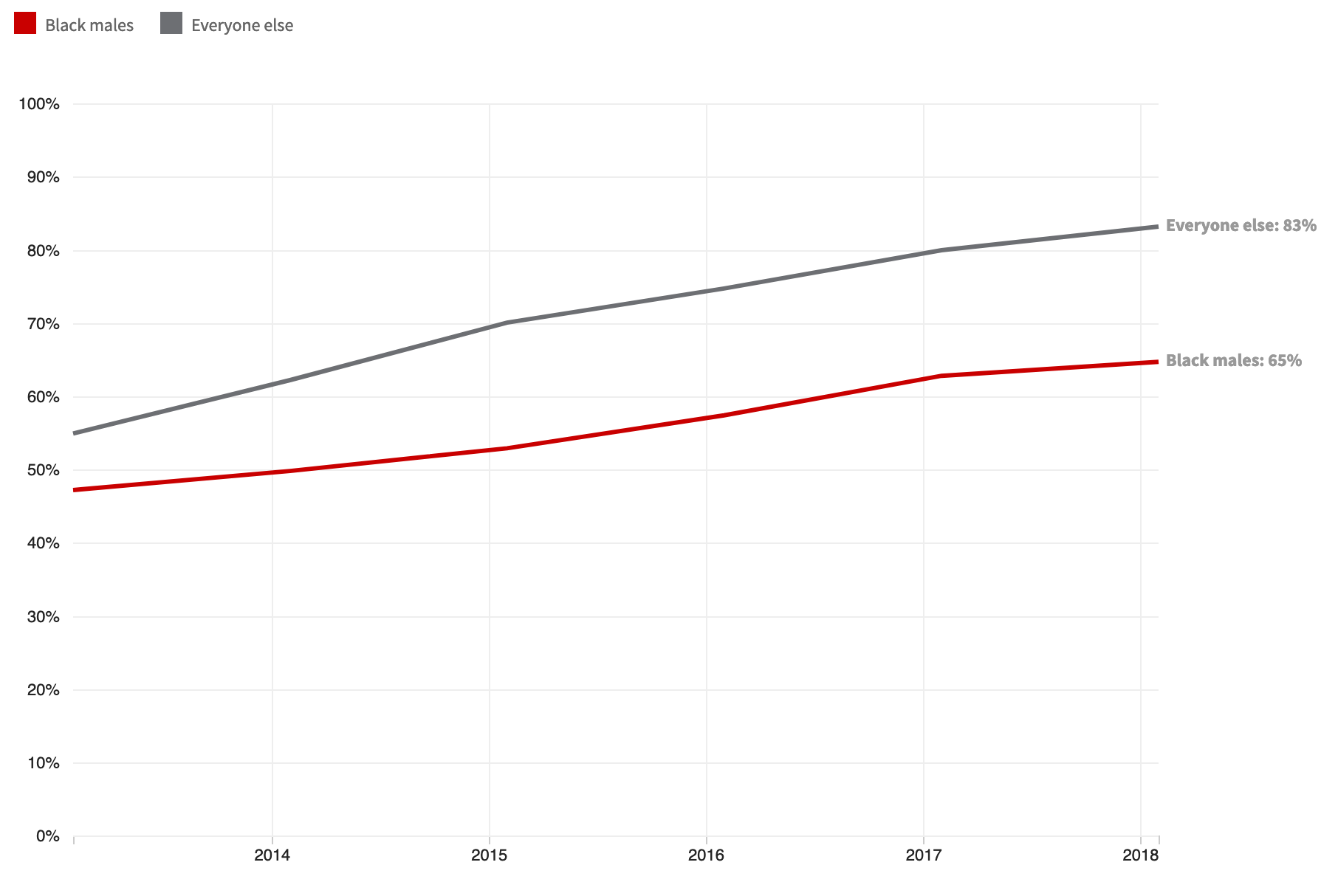Chicago students Sabeer Al-Shareef and Shameir Faulkner are looking forward to a crazy few months as they approach high school graduation. In June, they’ll walk across a creaky stage at their historic South Side neighborhood high school and then move on to college in the fall.
These are Chicago success stories, exactly the kind Chicago Public Schools CEO Janice Jackson loves to highlight — young black men getting their diplomas and taking the next step.
“One thing that does not get enough attention in terms of our graduation rate is that it is largely driven by neighborhood schools and in particular African-American males,” Jackson told a packed luncheon last year. “The story is that talent is not unevenly distributed. It is everywhere.”
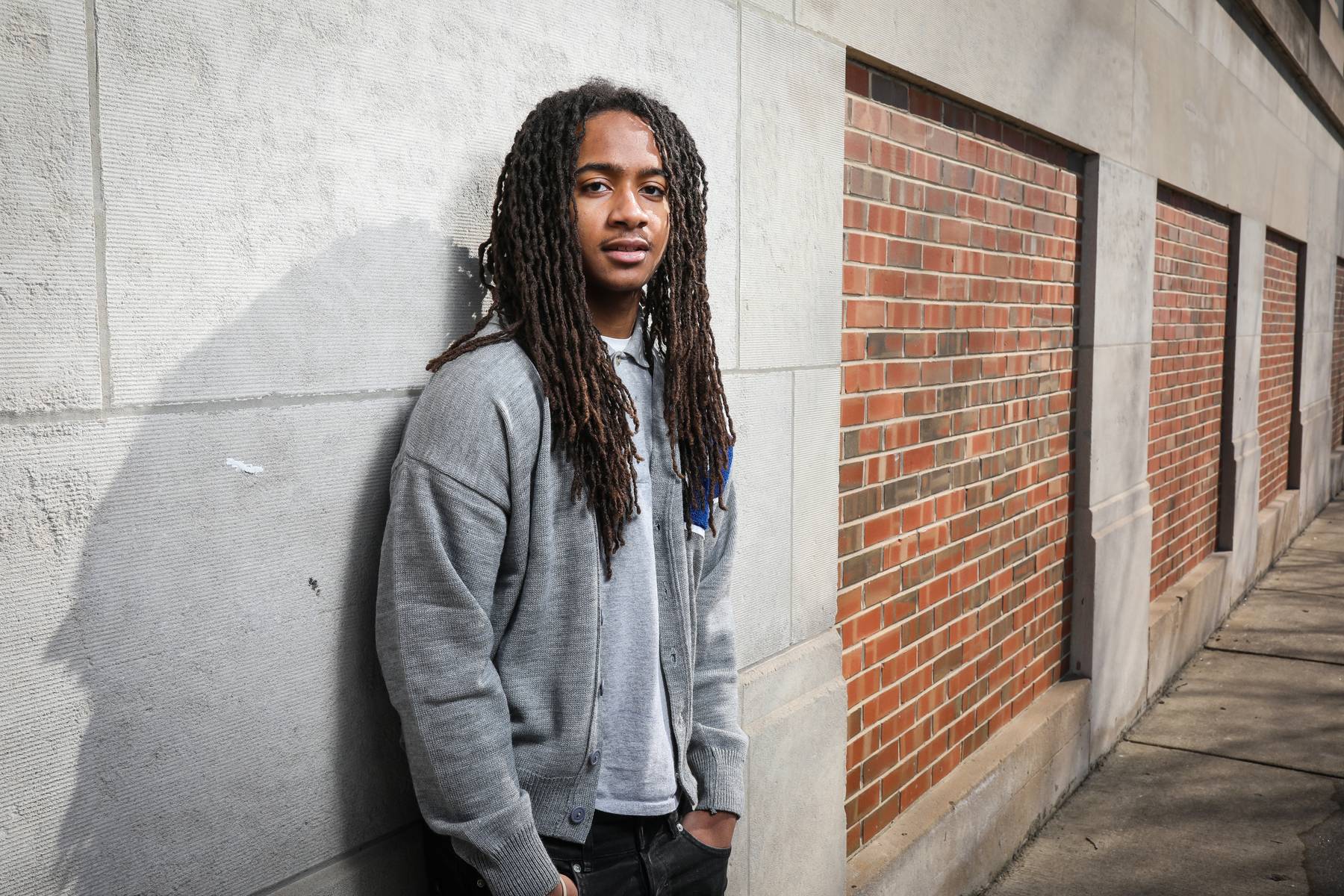
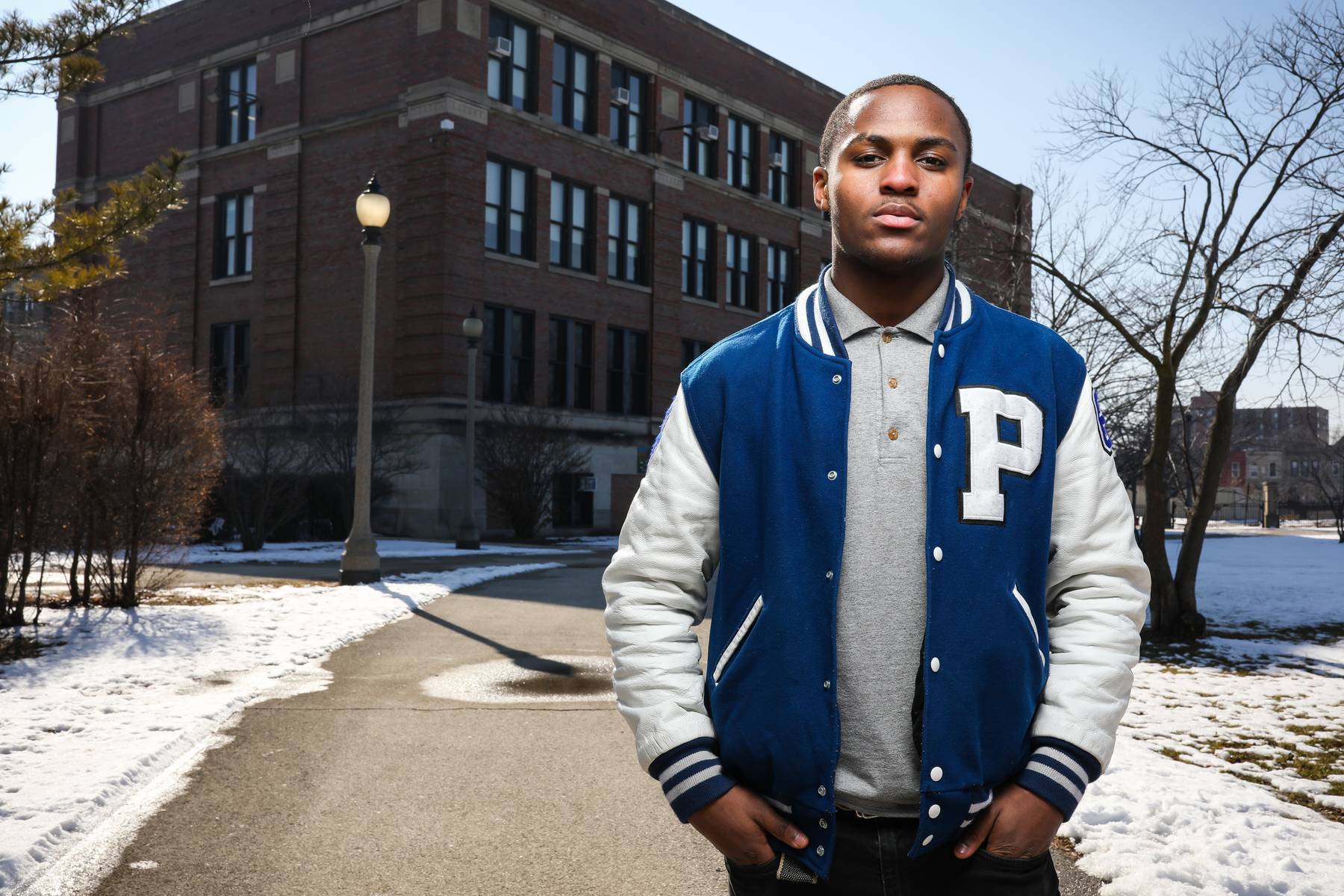
In the speech at a United Negro College Fund event, Jackson went on to say that Chicago Public Schools is doing a better job spreading opportunity around. She credited Mayor Rahm Emanuel, who was sitting next to her on the stage.
Graduation rates in CPS are up for all students, but there are powerful reasons to focus on black boys. Jackson knows changing the trajectory for black males, who historically have had the worst graduation rates, can be life changing. High numbers of black men without high school degrees in some communities helps contribute to sky-high unemployment and incarceration rates.
What Jackson said is true; more black male students are getting high school degrees from Chicago Public Schools.
Over the past five years, the black male graduation rate has gone up by 18 percentage points, compared to 14 points for all other students. The black male graduation rate now stands at 65 percent.
Graduation rates in CPS are on the rise
Notes
“Everyone else” includes all students except black males
But a WBEZ analysis found some troubling trends behind those improved numbers. Significantly fewer black boys — 2,600 fewer — are starting as freshmen now than five years ago. And an increasing number of graduates are getting their degrees from alternative second-chance schools, which are less demanding than traditional schools, but count toward the graduation rate.
Finally, there is an increase in the number of black boys who transfer out or die after starting as freshman in CPS. Black male high school students die at a higher rate than any other student racial and gender demographic group, according to CPS data.
After accounting for all these factors, just 48 percent boys at CPS ultimately earned a diploma from a traditional or charter Chicago high school in 2018. That’s only a six percentage point improvement from five years ago.
Experts say school district officials should be paying attention to trends behind the numbers.
Keisha Davis-Johnson is executive director of the Greater West Town Community Development Project, which runs an alternative school and a jobs training program that mostly serves men. She sees no reason to celebrate.
“We have a lot of work to do with our young people,” Davis-Johnson said.
She said she still sees many young men who have gone to under-resourced elementary schools, who struggle with the basics and feel disconnected from school.
But CPS Chief Education Officer LaTanya McDade said the improved graduation rate for black male students is a byproduct of them having received a better education. This is backed by studies of elementary school test score growth done by esteemed researchers, she said.
The number of black males who dropped out also has decreased substantially over the last five years, from 45 percent to about a third today.
“Quite frankly, the growth in graduation rate for black male students is really indicative of the progress that we are making as a whole in the district,” McDade said. “What we are seeing is that all tides are rising across the board.”
More degrees from second-chance schools
Despite the strides McDade’s highlights, many black students, especially boys, are ending up in alternative high schools. These schools, which were originally set up for dropouts, don’t require the same number of credits as traditional Chicago public schools, and don’t offer the same promise of post-secondary success.
The number of black male students who graduate from alternative schools has more than doubled in the past five years. In 2018, 9 percent of freshman got diplomas from alternative schools within five years of starting high school, up from just 2 percent in 2013.
More black male students are graduating, but a growing percentage graduate from alternative schools
Notes
Chicago Public Schools calculates graduation rates based on students who have graduated after five years. The percentages in this graphic do not equal 100 percent because five years after freshman year, some students have not graduated nor have they dropped out. Special education students are legally allowed to stay in school until they turn 21 years old.
This did not happen by accident. For decades, Chicago’s small number of second-chance schools were run by non-profit community organizations and were much like traditional schools, but were smaller and more intimate.
Then, between 2013 and 2016, the school district opened 15 new ones, many of them run by for-profit, out-of-town groups. Several only required students to be in class half a day and mostly had students sitting at computers doing online learning. They also offered an accelerated curriculum, meaning that students could get diplomas in as little as two years, rather than four.
All but four of these 15 new schools were located in mostly black neighborhoods.
Chicago counts diplomas from alternative schools in its graduation rate, even though the University of Chicago, which has studied CPS’ graduation rate extensively, does not.
Many of these alternative schools post high graduation rates, but they only count how many seniors make it to graduation. And these schools have low attendance rates, according to CPS data. Of graduates from alternative schools, less than a quarter enroll in college and, of those students, less than a quarter make it past the first year.
McDade said the school district is working with the University of Chicago’s Education Lab to try to improve these schools. She said they plan to announce some pilot programs later this spring.
“They have to have viable paths forward,” she said. “We know there is work to be done in that space.”
Yet McDade said alternative schools play an important role, especially for students who have been out of school for a long time or are returning to the community after being incarcerated.
But Jitu Brown, a South Side activist who is president of a national coalition against publicly-funded privately-run schools, said it is an outrage that black students wind up in these schools.
“If it was their child that was underserved in elementary, then went to a high school that was destabilized, and then their child ended up at an alternative school where they were not prepared for success in the 21st Century … Would you rather them there than on the street?” Brown asked. “Yes … but again that is a pretty low criteria to have in a developed country.”
Rather than investing in neighborhood schools, Brown said for many students in poor, black neighborhoods, these alternative schools have become de facto neighborhood schools.
“They are hiding young people in alternative schools so when we graduate it looks like more of us are graduating than really are,” he said. “To us, it is a shell game.”
None of the for-profit alternative school groups would talk to WBEZ about this story. A previous investigation found these schools have high administrative costs and spend little on teachers, social workers or other support staff. Recent budgets show these operators continue to take as much as one-fifth off the top in management fees and that, on average, spend less than half of what the school district gives them on salaries of teachers and other staff.
Meanwhile, non-profit alternative schools officials said they are being starved because they are struggling to attract students. Many of them are in neighborhoods struggling with population loss and they have been inundated with these new competitors. As a result, dropouts who come to non-profit alternative schools yearning for a full-day high school experience — one that can meet their academic, social and emotional needs — often find a high school surviving on a shoestring.
Take Austin Career Education Center Academy. It is inside an old mason hall on Chicago Avenue on the West Side. Inside, there is always juice, coffee and snacks for students who might not have had a breakfast before coming to school.
Esteban Wright found his way to the school last year. Wright, who is gay, said he was constantly picked on at the neighborhood high school, Austin College & Career Academy.
“[The staff at Austin] knew and they were pretty supportive emotionally and mentally, but not physically,” he said. “They didn’t really do anything. They thought it was all me to be the bigger person.”
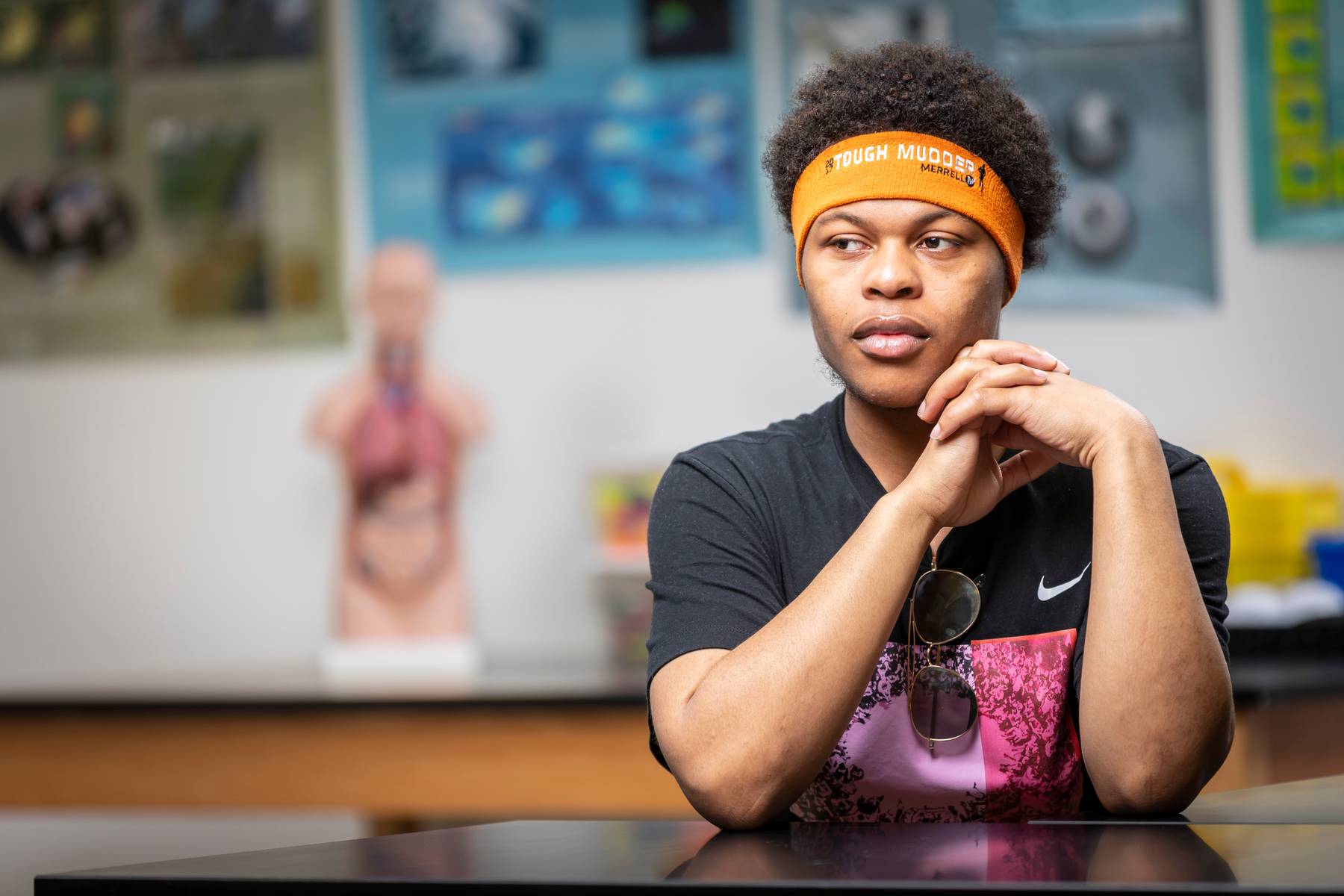
Wright said he got jumped at the end of his sophomore year, which he said prompted him to later beat up one his attackers. The next day when he got to school, he said the principal handed him a list of alternative schools and told him to pick one.
Wright said he has not gotten into fights at the alternative school because it’s small and safe. He said he felt it from the moment he walked in, and the registar told him the school staff wouldn’t give up on him as long as he didn’t give up on himself.
Anne Gottlieb, who served as principal of Austin Career Academy, said she knows these relationships are what students need to be successful at the school. But she said it is getting increasingly difficult to provide it on the budget the school receives.
“There are just not enough adults around,” she said.
Wright is in a better position than many alternative school students, as he is reading and writing at grade level. While there is variety, Gottlieb said the average student at her alternative school is performing at the third or fourth grade level.
This year, the school only has 100 students, down from 180 in 2015.
“So the less students you have, the more you are cutting away because you are keeping the teaching staff and the essential staff,” she said.
Gottlieb left her job at Austin Career Academy last month after working there for 20 years. She said she doesn’t expect to be replaced and she’s leaving partly to free up money to pay other staff.
More students disappear between freshman and senior year
The high graduation rate for black male students obscures the fact that so many black boys are leaving the school system all together.
On top of the 30 percent drop in black male students who start high school in Chicago now, black boys are also more likely than any other group to transfer out between freshman and senior year.
This is how it affects the graduation rate: Students who leave don’t count against CPS’ graduation rate — even if they ultimately drop out of their next school. Even if they die.
A WBEZ analysis shows that 12 percent of black male students who started freshman year in 2013 were gone by senior year, without graduating or being declared a dropout. Just four years before that, only 7 percent had left.
Through a smaller percentage of black females transfer out, the upward trend is similar for them.
Among the black male students who didn't graduate, a growing percentage either left the district or died
Notes
Chicago Public Schools calculates graduation rates based on students who have graduated after five years. The percentages in this graphic do not equal 100 percent because five years after freshman year, some students have not graduated nor have they dropped out. Special education students are legally allowed to stay in school until they turn 21 years old.
Chicago Public Schools did not provide detailed documentation on these students. But it could confirm that 48 black male students who started high school in 2013 have died. This is four times more than any other demographic group. A small number were homeschooled or sent to residential therapeutic day schools. The rest transferred to private schools in Chicago or to schools outside the city.
To calculate the graduation rate, the school district takes the group of students who started as freshmen and subtracts out students who die, are homeschooled or transfer to private or suburban schools. Then, it divides the adjusted group by the number who graduate within five years. National and state education departments use a similar method to calculate graduation rates, but their formulas vary from that of Chicago Public Schools.
McDade said she and her boss, Janice Jackson, know school and neighborhood population loss is a problem. But she said the school district cannot be blamed.
“It goes beyond education,” she said. “There are some things outside our control.”
McDade insists the number of students transferring out of the school district has nothing to do with the improved graduation rate.
But researchers from the University of Chicago Consortium on School Research in a 2016 paper sound a note of caution. Because transfer students are removed from the graduation tally, there could be pressure on school leaders to falsely record students as transfers or to push out lower achieving students, the researchers said.
“Either of these occurring to a great extent over time could lead to an artificial increase in graduation rates,” according to the paper.
This concern is especially relevant because data shows that transfer students are increasingly lower achieving than students who remain in CPS and are counted in the graduation rates, according to the paper. Furthermore, the gap between students who transfer and students who stay has been growing over time. Consortium data shows that grade point averages and test scores for students who transfer are now similar to those for students who drop out.
State data shows black male students transfer most often to three high schools in Thornton Township High School District 205, which serves Harvey and surrounding south suburbs, and three in Proviso Township High School District 209, which serves Maywood and the surrounding western suburbs. The six high schools in these areas each get about 20 black male students from Chicago every year, according to state data.
These are racially-isolated suburbs with schools that serve poor, black and Latino students and are not adequately-funded, according to the state’s definition. The graduation rate for the Harvey-area schools is 67 percent and 75 percent for the Maywood schools, according to the state, which calculates graduation somewhat differently than CPS. The state puts Chicago Public Schools’ graduation rate at 74 percent.
“This is their first stop,” said Ebonie Williams, principal of Thornridge High School in south suburban Dolton. “You have families relocating for various reasons, then you have students who weren’t successful in Chicago schools, which could have sparked the move … we see it quite often.”
Williams and other leaders of Thornton Township High School School District 205 said parents are seeking safer schools and also schools that can offer their students more. Many public high schools on the South and West sides of Chicago have been drained of students and struggle to provide a robust curriculum and clubs, but the three Thornton high schools offer a full line up of sports and other extra curricular clubs, as well as many in-school programs.
Thornton District 205 Superintendent Nathaniel Cunningham said, even when the budget is tight, he prioritizes these programs.
“If they are connected to us, they will stay,” he said. “If they come in and play sports, they love to stay … If they come in to be a state championship speech person, they stay. We have lots of programs and opportunities for kids and we spend time connecting to them.”
But leaders in Thornton District 205 said they know there are also tremendous obstacles to overcome. Tony Ratliff, the principal at Thornton High School in Harvey, grew up in the area. When he was a student in the 1970s, the economy in the area was booming and the families were stable, he said.
Things are different today.
“So we have people in the doors and out the doors,” he said. “As fast as we have them in, we also have them out.”
Ratcliff said he strives to have a curriculum that speaks to the reality of his students, particularly the young men. If he doesn’t, he said it is just another reason for them to drop out.
“Sometimes we fall short of the mark because something is going on in that students life that is just so heavy, outside of the school walls, they just can’t cope,” he said. “But we do a great job of salvaging students.”
If Chicago were truly successful, Cunningham said his school district wouldn’t be getting so many students.
“How goes Chicago Public Schools is also how goes the rest of the state,” he said, noting several routes from Chicago to the suburbs and downstate. “When I was in Danville, kids came from Highway 1… When I was in Springfield and Bloomington, they came by I-55 ... If things are not happening well for CPS, they go right down the road to the next school they can find.”
Two survivors
Faulkner and Al-Shareef, the two friends looking forward to high school graduation, love their Chicago public high school. For four years, they’ve attended Phillips Academy High School in Bronzeville on the South Side. Built in 1904, it is an imposing school that spans an entire city block.
Faulkner, who lives on the Southeast Side, outside of the Phillips attendance boundary, said he begged his mother to let him come to the school. He had been watching YouTube videos about the football team and desperately wanted to play. Few Chicago public high schools have good teams, if one at all, and Phillips made history in 2015 when it was the first one to win a state football championship.
Faulkner said being on the football team made him feel like he was part of “something great.” And that the team became like his family. In fact, when they break the huddle before a game, that is what they say, “family.”
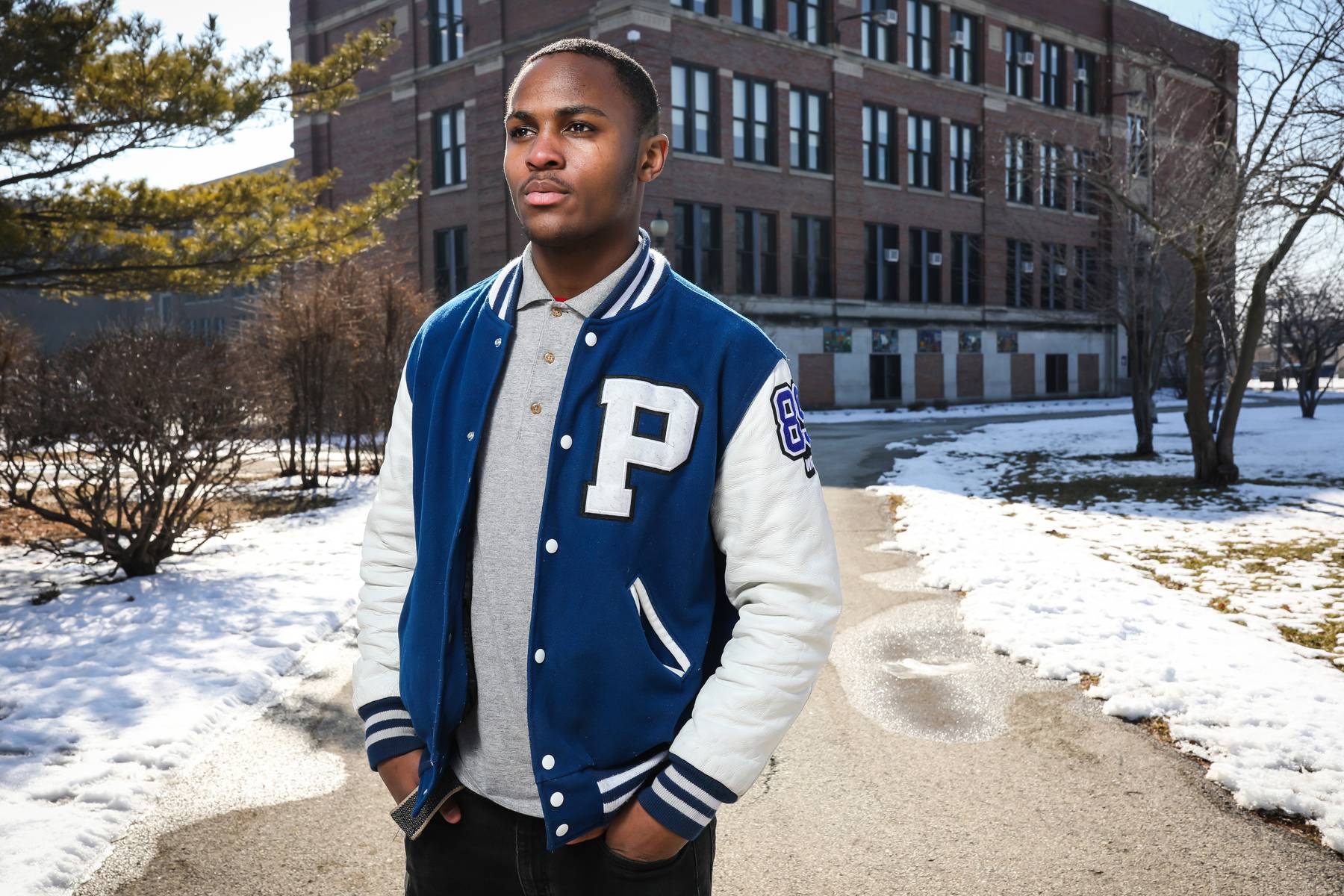
The young men also said football kept them coming to school. But over time, the strong relationships they built with the teachers and the principal also kept them engaged.
They are now both taking early college classes. Jackson, the CPS CEO, credits an expansion of dual credit classes with helping give students confidence that they can graduate and go to college.
Faulkner has a football scholarship at Trinity International University, a small private college in Deerfield.
Al-Shareef also played football, but got injured his senior year and didn’t receive any scholarship offers. He said he used to take it as an insult when coaches would tell him that he is smart and can go to college for academics, but now he is counting on it. He is still awaiting acceptance and scholarship offers.
But when Al-Shareef and Faulkner talk about their experience at Phillips, the disconnect between the official graduation rate and what is happening on the ground is obvious. Phillips’ official graduation rate is 65 percent, but the two young men describe themselves as survivors in a school where lots of students don’t make it.
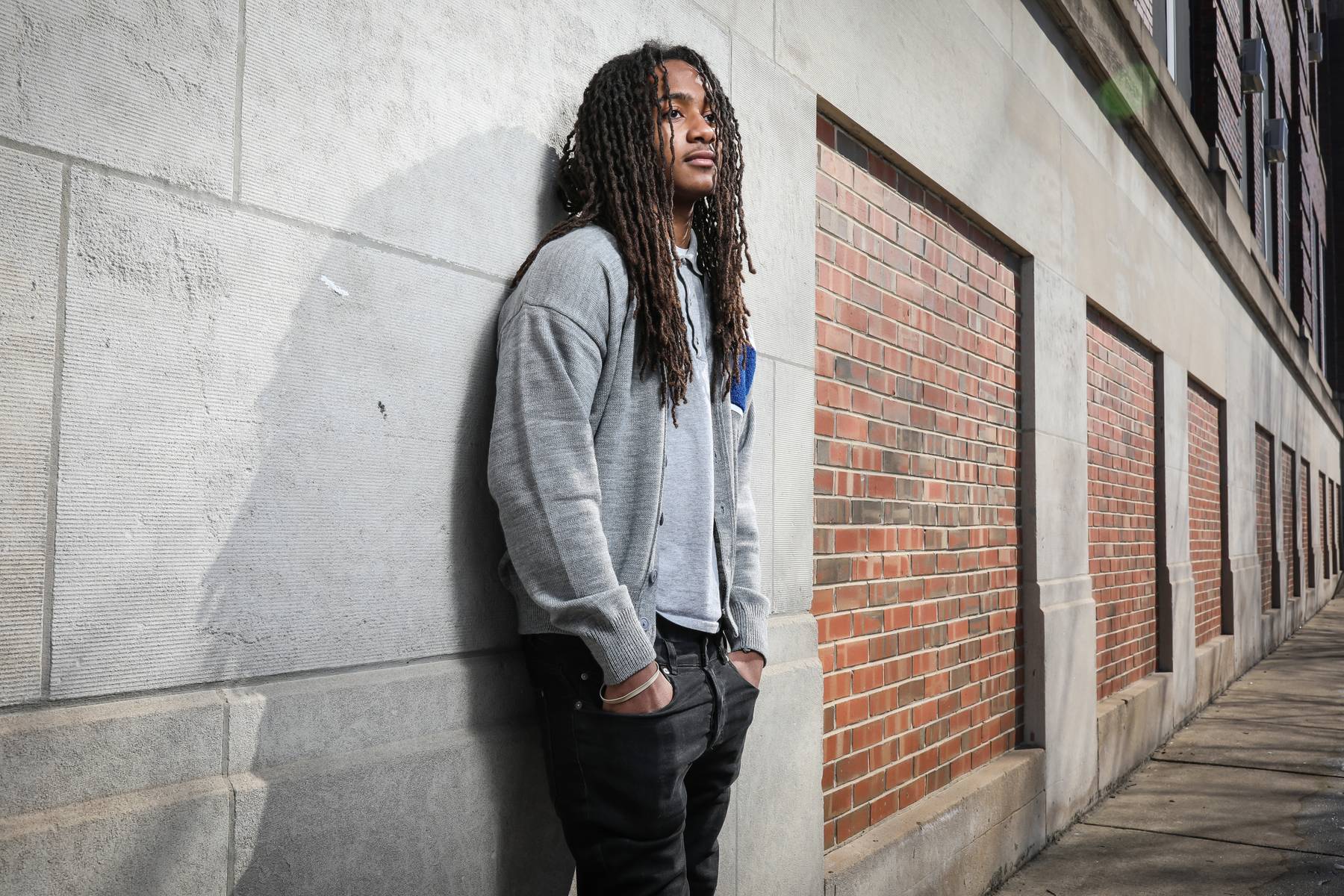
“I had friends freshman year that were on the football team and I never saw them again,” Al-Shareef said. “So many people come and go throughout the school. The class I came in with… half that class is not here my fourth year.”
Al-Shareef said a lot of his friends decided school was not for them. Some of them dropped out and others just stopped coming to school on a regular basis.
Still other students fought so much and got in trouble so much that the dean offered them transfer papers, he said. “The deans don’t like students who give the school a bad image.”
Faulkner added that some classmates have wound up in prison and some of his closest friends were shot and killed. These friends became his motivation, sort of warning signals that if he didn’t stay focused, bad things could also happen to him.
“What really got me through was seeing people lose their lives,” he said. “My goal is football and graduation. If I ever got distracted from that, then there is a huge possibility that I would get killed as well. The really drove me.”
Because Faulkner and Al-Shareef don’t graduate until June, data for their class is not available. But a look at last year’s graduation rate is instructive. The class started with 145 freshmen, but more than half never made it to graduation.
In the final graduation tally, 33 students weren’t counted because they died or transferred to a suburban or private school. On top of that, 41 students officially dropped out.
That left 71 graduates, but half got their diplomas from schools other than Phillips, the vast majority from alternative schools, CPS data shows.
In June 2017, just 37 of the school’s original 145 students walked across the creaky stage of the ornate auditorium, shook the principal’s hand and got their diploma.
Despite that, the school’s official graduation rate says 65 percent.
Credits
Sarah Karp covers education for WBEZ. Follow her @sskedredporter and @WBEZeducation.
Design and development by Paula Friedrich, a multimedia producer at WBEZ. Follow her @pauliebe.
Photographs by Manuel Martinez, a visual producer at WBEZ. Follow him on Twitter at @DenverManuel.
